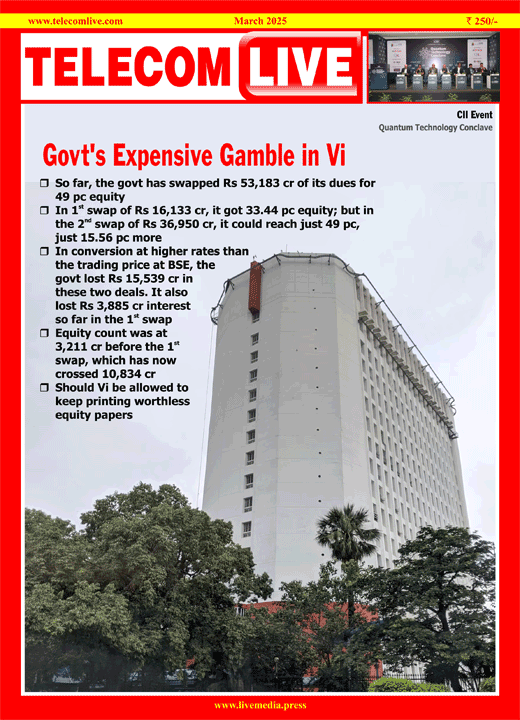Include 6GHz in next spectrum auction: GSMA to DoT
India should include the 6GHz band (6.425-7.125GHz) in the next spectrum auction, as these airwaves will be crucial for telecom carriers to support the expansion of fifth-generation or 5G mobile services and will strengthen the country’s competitiveness, according to the GSMA.
“We kindly request the DoT (Department of Telecommunications) to send a reference to TRAI (Telecom Regulatory Authority of India) regarding the inclusion of the 6GHz band, along with any other band also that is made available for IMT (mobile services), in the upcoming spectrum auction process,” Jeanette Whyte, head of public policy, Asia Pacific at GSMA, said in a letter to Neeraj Mittal, secretary, DoT.
ETTelecom has reviewed a copy of the letter dated March 26, 2025.
“This step would ensure that all necessary IMT spectrum bands—across mid-band and high-band frequencies—are made available together, facilitating a more comprehensive and efficient spectrum strategy,” Whyte said.
The top GSMA executive added that the inclusion of the 6GHz band in the upcoming auctions will be instrumental in strengthening India’s digital economy and maintaining its competitive edge, while supporting its ambition to become a global hub for advanced telecom technologies.
GSMA’s letter comes close on the heels of the Union Cabinet approving the refarming of additional spectrum across 10 bands, including 470MHz to 6GHz, to make them available to telecom operators to meet their fifth-generation (5G) mobile services and 6G research and development needs, ET reported this January.
Airwaves in the mid-band and some portion of the 6GHz are currently being used by the ministries of space, defence, information and broadcasting, railways, and housing and urban affairs.
Lately, GSMA and the Cellular Operators Association of India (COAI), and the Broadband India Forum (BIF) have been extensively lobbying for the 6GHz band.
Indian telecom incumbents Reliance Jio, Bharti Airtel, and Vodafone Idea (Vi) led by COAI have been demanding 6GHz for addressing a shortage of spectrum, expanding 5G services in the mid-band and supporting 6G in the future. By contrast, Wi-Fi and technology companies represented by the BIF want the entire 6GHz band delicensed to proliferate broadband connectivity through Wi-Fi nationwide and bridge the digital divide.
The London-based industry association noted that demand for more mid-band spectrum is set to intensify with the rapid adoption of 5G and growth in data traffic.
GSMA estimates that countries will need an average of 2 GHz of mid-band spectrum by 2030 for reliable, high-quality 5G services.
“The 6.425-7.125 GHz range, which has been identified for IMT at WRC-23 by several countries, will be essential for 5G expansion and future development of mobile networks. Thus, it is important for India to start planning for this band now,” Whyte said. “We commend the DoT’s efforts in expanding the supply of IMT spectrum, particularly the 6 GHz band for next-generation mobile services.”
GSMA Intelligence estimates that 5G could contribute $455 billion to the Indian economy between 2023 and 2040.



